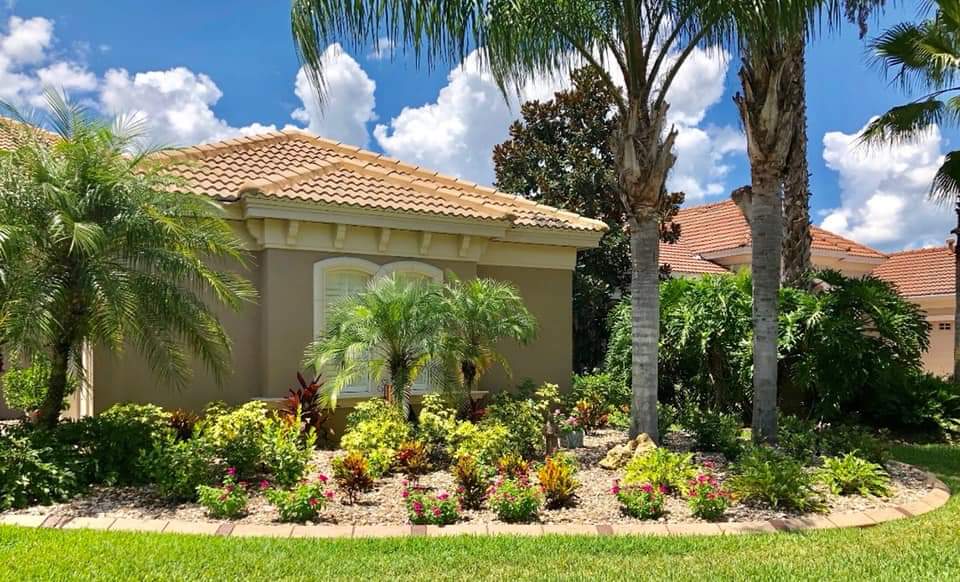A Comprehensive Overview to Designing and Implementing Effective Landscaping Solutions
The art and scientific research of landscaping expand past plain visual appeals; they include a thoughtful combination of layout concepts, ecological stewardship, and functional implementation. What strategies can one use to guarantee these landscapes not just thrive yet additionally grow in consistency with their environments?

Understanding Landscape Design Concepts
One may wonder what fundamental aspects add to effective landscape layout. At its core, effective landscape layout depends upon several essential principles that direct the arrangement and selection of components within a room. These concepts consist of unity, rhythm, percentage, and balance, each serving to produce a harmonious outdoor atmosphere.
Unity describes the natural relationship amongst various elements, making certain that they interact aesthetically and functionally. Balance can be achieved through symmetrical or unbalanced arrangements, permitting the landscape to feel secure and inviting. Proportion includes comprehending the range of elements in regard to each various other and the surrounding environment, advertising visual consistency and comfort.

Assessing Your Outdoor Room
Prior to applying the principles of landscape style, an extensive assessment of your outdoor space is vital. This initial examination aids specify the scope of your landscaping job and ensures that your layout lines up with the special qualities of your building. Begin by evaluating the measurements of your area, taking specific dimensions to recognize the offered area for various components such as pathways, yards, and patios.
Following, observe the existing attributes of your landscape, consisting of topography, soil quality, and drainage patterns. These aspects considerably influence plant option and positioning. Furthermore, analyze the sunlight direct exposure throughout different locations throughout the day, as this will certainly affect the sorts of plants that grow in your garden.
Take into consideration the microclimates created by structures, trees, and various other challenges, as they can influence temperature level and wetness degrees. Take note of any existing plants or hardscape components that you desire to retain or remove. This detailed evaluation lays the groundwork for a reliable and knowledgeable landscaping solution, making certain that your design is not only visually pleasing but lasting and additionally functional for several years to come.
Lasting Landscape Design Methods
These methods not only promote environmental equilibrium however likewise improve the practical and aesthetic worth of a landscape. Carrying out reliable watering systems, such as drip irrigation, minimizes water waste and guarantees that plants get ample dampness (Palm Desert Landscaping).

An additional effective strategy is the calculated positioning of trees and bushes to supply all-natural windbreaks and shade, hence reducing energy expenses (Palm Desert Landscaping). Rain gardens can be integrated into the landscape design to handle stormwater drainage efficiently, filtering toxins before they go into waterways
Choosing the Right Plant Kingdoms
Choosing the right plants for your landscape is important to achieving both visual allure and environmental consistency. The process starts with an understanding of your regional environment, soil conditions, and the details microenvironments within your landscape. Examining factors such as sunlight exposure, moisture levels, and existing flora will certainly aid you pick plants that grow in your one-of-a-kind setup.
Consider integrating indigenous plants, as they are well-adapted to local problems, call for much less upkeep, and assistance regional wild animals. In addition, selecting a varied array of types can enhance biodiversity while lowering the threat of disease and bug break outs. It is important to examine the growth behaviors, growing periods, and seasonal colors of potential website link plants to create a natural and vibrant landscape.
In addition, consider the meant use the room; for example, if the location will certainly experience high foot traffic, select resilient ground covers. By attentively choosing plants that line up with both your aesthetic goals and ecological requirements, you can produce a sustainable landscape that not just boosts your building however also adds favorably to the surrounding ecological community.

Execution and Upkeep Strategies
Once the ideal plants have actually been picked for your landscape, the emphasis moves to efficient implementation and continuous maintenance strategies. Effective installation begins with proper site preparation, that includes soil testing to establish nutrient degrees and pH, adhered to by modifying the soil as required. Very carefully set up plants according to their development practices and light needs, making sure adequate spacing to advertise healthy and balanced growth.
Irrigation is a critical element of execution. Develop a watering routine that considers the particular needs of each plant types, adjusting for seasonal changes. Utilizing drip watering systems can improve water efficiency and lower drainage.
Maintenance strategies have to be carried out to ensure the durability and vitality of your landscape. Normal tasks include weeding, mulching, and pruning to manage development and prevent illness. Fertilization must be conducted based upon dirt examinations, giving the essential nutrients without over-fertilizing.
Keeping an eye on for conditions and bugs is necessary; early discovery can stop substantial damage. Seasonal adjustments to upkeep regimens, such as winterizing perennials and preparing for springtime development, will certainly make certain that your landscape remains healthy and aesthetically enticing year-round.
Verdict
Effective implementation and recurring maintenance further Discover More make sure the longevity and vigor of landscapes. By incorporating these components, landscapes can be changed right into attractive, functional settings that promote biodiversity and contribute favorably to neighborhood health.
One may wonder what fundamental aspects contribute to effective landscape layout. At its core, effective landscape layout hinges on numerous key principles that assist the arrangement and selection of components within a room.Selecting the right plants for your landscape is critical to achieving both visual charm and ecological consistency. It is crucial to examine the development habits, blooming durations, and seasonal colors of prospective plants to create a natural and vibrant landscape.
Once the best plants have been picked for your landscape, the emphasis shifts to effective execution and continuous upkeep techniques.